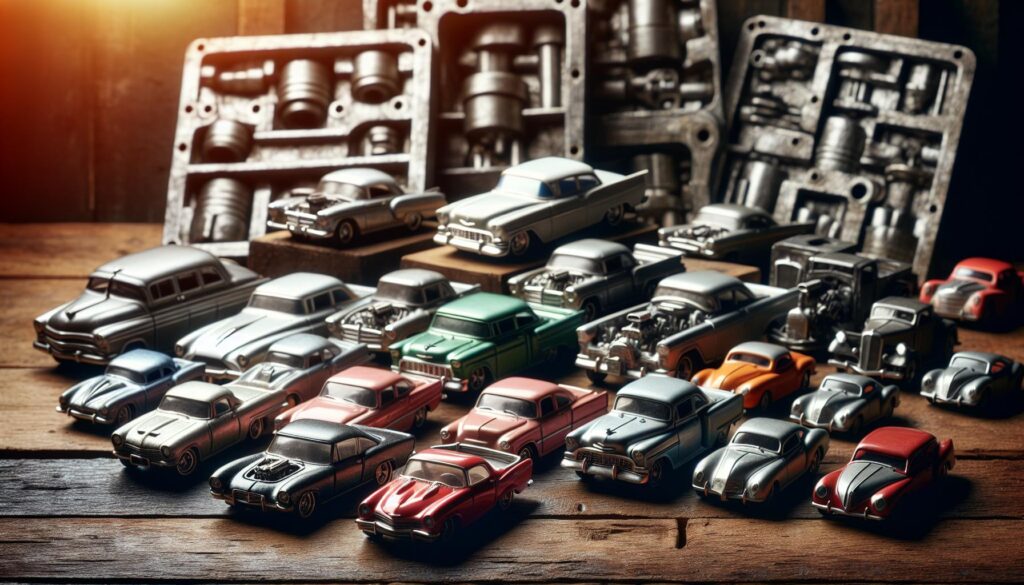Introduction
Diecast cars, the tiniest masterpieces in the automotive world, pack oomph and nostalgia all in one. Want to cruise down memory lane without needing a passport? Hop aboard!
These little gems, cast from molten metal, started generating buzz in the early 1900s. Companies like Dinky Toys and Tootsietoy were the original magicians who turned pools of metal into miniature miracles, and boy, have they left a legacy!
Brief Explanation of Diecast Cars
Let me explain. Diecast cars are created when hot metal flows into molds, like baking—but way cooler.
These once lead mini-me wheels, now crafted from zinc alloy, evolved from blocky toys to precision matches of real cars.
They’re more than just a blast from the past; they’re little reminders of the real-life roar and rustle of car engines scaled down to palm-sized hobbies.
Early Beginnings (Late 19th – Early 20th Century)
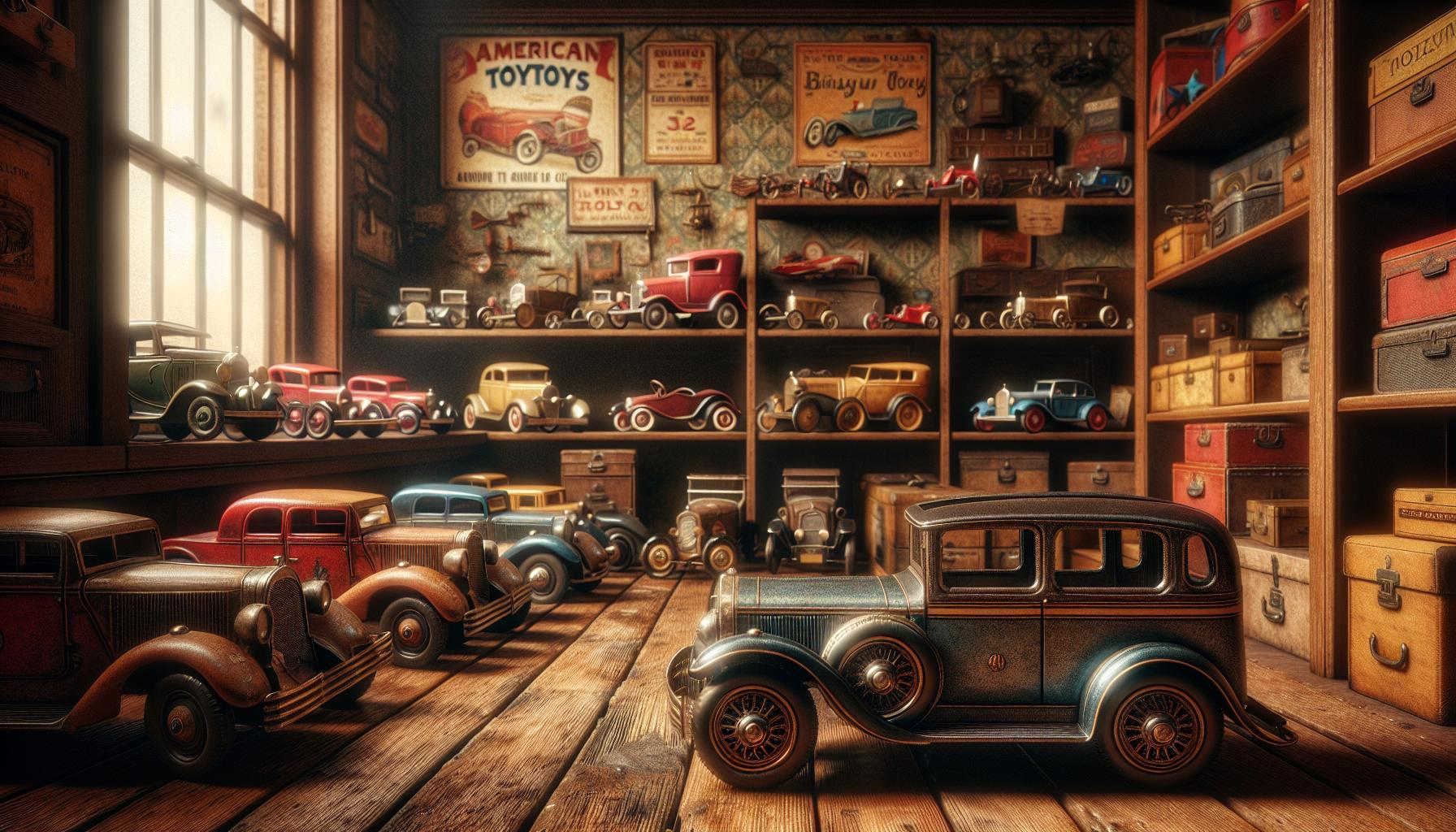
Ah, the good ol’ days when kids wanted toy cars as much as adults wanted the real deal! The journey of diecast cars cruised alongside real automobiles just like fries with a burger.
As those fancy horseless carriages hit the roads, tiny metal replicas revved into toy shops. Wealthy folks splurged on these for their kiddos, pushing toy car envy to new heights.
Emergence of Toy Cars Alongside Real Automobiles
Imagine this: it’s the late 1800s when people liked to slick their hair back and wear bowler hats. Companies like Märklin and Bing made detailed toy cars from tinplate in Germany.
Made for rich kids and probably dusty display cases, you bet they kicked off the kiddie car craze before cars roamed the streets.
Early Materials and Manufacturing Techniques
Let’s talk shop about what those early model makers cooked up. They used tinplate and even lead—talk about heavy playthings!
Over in America, Tootsietoy experimented with lead in 1911 before switching to zinc alloy. Think chunky and shiny, but off-limits if you’re teething. Safety issues gave lead the boot in the ‘30s, opening lanes for better materials and child-safe fun.
Pioneers in Toy Car Production
The OG of diecasters? Starting in 1934, Dinky Toys was throwing down the wild card on creativity. They unleashed a parade of cars, tractors, trucks, and moving parts like real-deal wheels.
Talk about setting the pace!
They were years ahead of challengers like Matchbox and Corgi, who later made their mark with those famous, fit-in-your-pocket wonders. We’ve got a lot of pioneering spirit from those early days to thank for the diecast dynasties we cherish today.
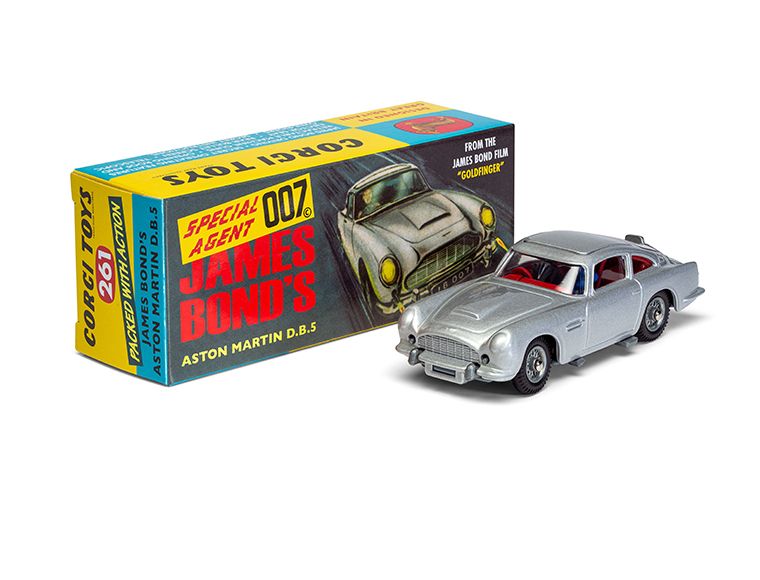
The Birth of Diecast Cars (1920s – 1930s)

Talk about a game-changer! The roaring ’20s didn’t just give us jazz and flappers. After the curtain closed on World War I, the die-casting technique broke free from military shackles and swaggered into toy manufacturing.
Introduction of Die-Casting Techniques After World War I
Manufacturers took one look at die-casting and said, “Yes, please!” Early model car makers jumped on this technique like it was the latest dance craze.
Die-casting involved pouring molten metal into precise molds, turning blobs of metal into sleek, snazzy replicas of the cars inching onto real roads.
Dinky Toys and Their Impact on the Industry
Then came the Brits, rolling in like royalty with Dinky Toys. These little gems didn’t just fill toy boxes—they conquered them.
Dinky started producing diecast delights, including sports cars, trucks, and tractors, earning the devotion of collectors worldwide. These weren’t just toys; they were miniature dreams on wheels!
Early Diecast Car Features and Limitations
Let’s get real—these old-timers weren’t flawless. Early diecast cars were often crafted from lead, making them heavy and unsafe for young speedsters.
Enter zinc alloy in the 1930s, a savior in toy car production. This new, shiny material produces sharper details and more durable toys, keeping the diecast road smooth and steady.
The Golden Age (1950s – 1960s)
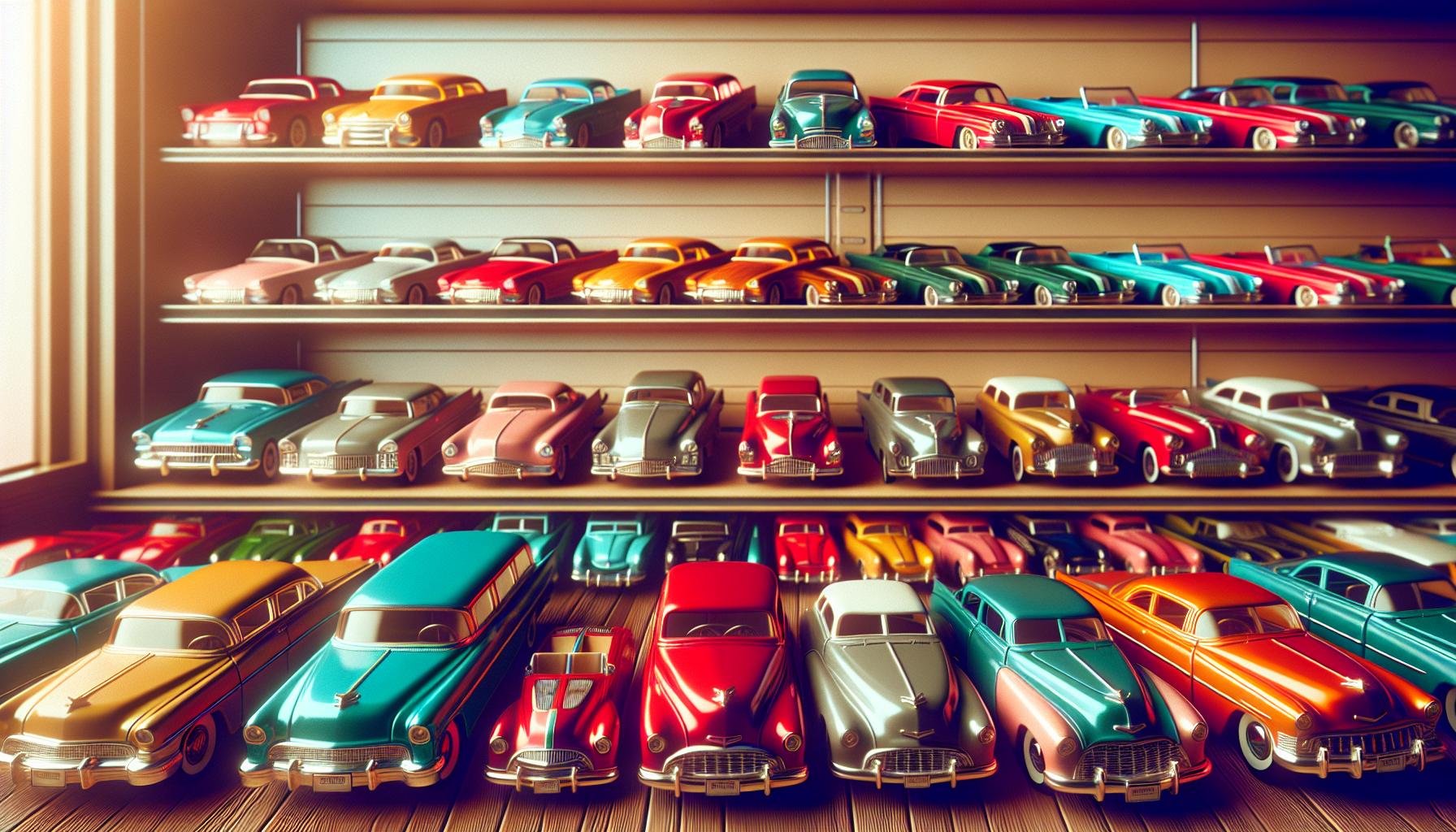
Ah, the groovy 50s and swinging 60s! What a time to be a diecast car enthusiast. The toy industry back then was like a party, with new brands and shiny models popping up faster than you can say “vroom vroom.”
Let’s buckle up and spin through this golden era in diecast history.
Post-war Economic Boom and Its Effect on the Toy Industry
After World War II, wallets were fattening, and families were cruising into a new age of prosperity. Picture this: parents were so flush with cash that they were begging to spend it on toys.
This booming economy revved the toy industry, making diecast cars an absolute must-have for kids everywhere.
With pocket money burning holes in their dungarees, children were eager to snag the latest models, bringing excitement to playtime. Talk about a drive into prosperity!
Introduction of New Brands: Corgi Toys, Matchbox, and Others
Enter Corgi Toys in 1956, Mettoy’s brainchild named after an adorable dog breed and packing a punch to the toy world. These guys said, “let there be windows,” and boom, glazed plastic windows became the latest hot feature.
Not long after, Matchbox cars wheeled onto the scene, fitting snugly into matchbox-sized packages and making every kid’s day. It was like a miniature car lover’s dream parade!
Technological Advancements: Plastic Windows, Interiors, and Moving Parts
Who knew model cars could look so real? Corgi Toys wasn’t messing around with their expensive glazed windows and fancy detailed interiors.
They even added cool features like working suspension and opening doors that had kids (and adults, let’s be honest) geeking out.
By the 1960s, these innovations made diecast cars feel more like miniature engineering marvels than toys. Who needs a full-sized car when your model one has jeweled headlights?
The “Model Car Arms Race” and Competition Between Brands
Hold onto your hats because the toy aisles were the ultimate battleground—think “model car arms race” but with toy-sized combat!
Big names like Corgi, Matchbox, and many others fought tooth and nail to outdo each other, racing to introduce the coolest, most feature-packed models.
Tiny cars, big stakes. It was a competition where everyone tried to stay ahead, rolling out increasingly intricate designs. Little did they know, their mad dash for diecast domination was making history.
The Hot Wheels Revolution (Late 1960s – 1970s)
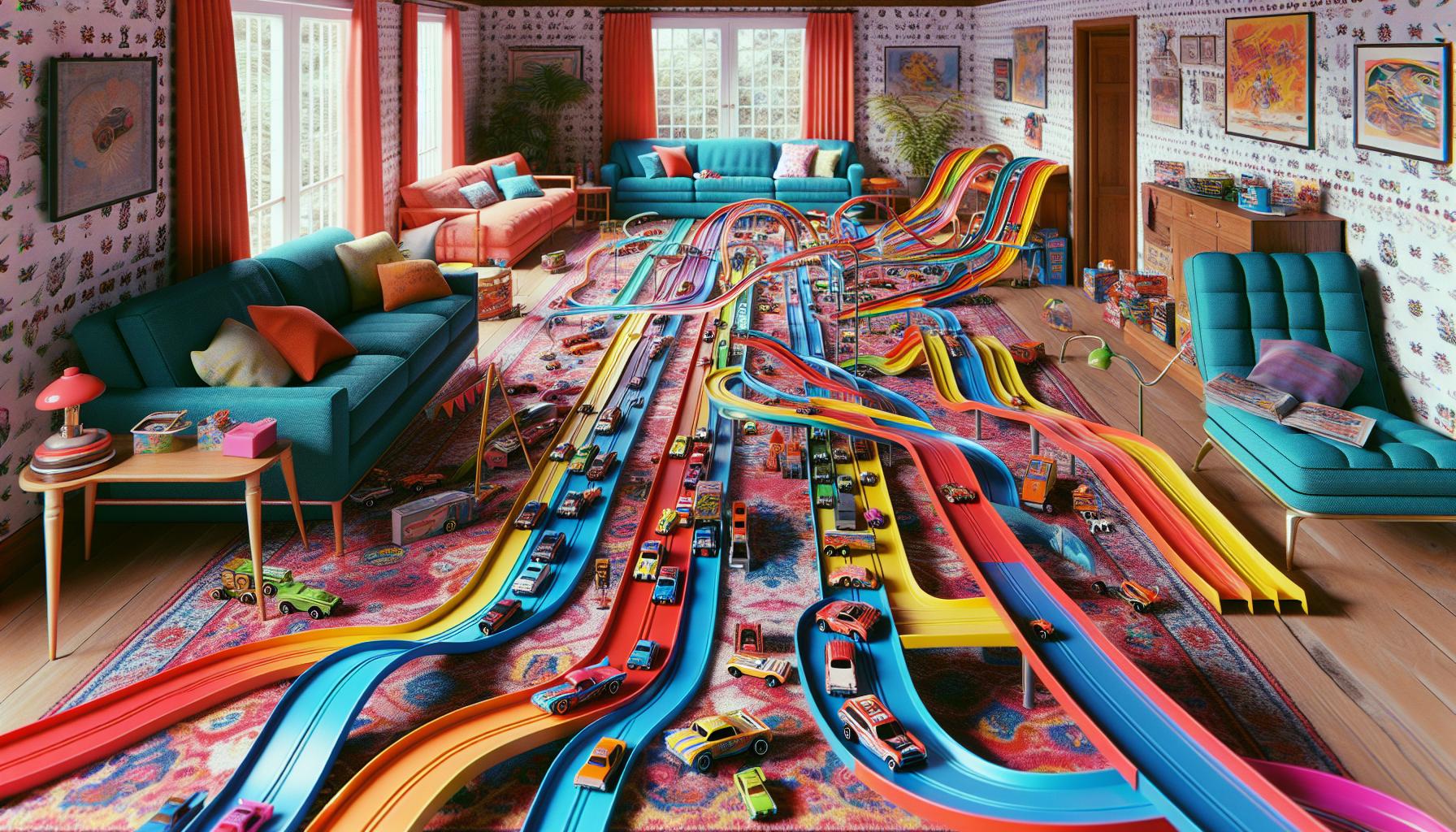
Get ready to rev your engines because the late ’60s to ’70s were a wild ride in the diecast world. Hot Wheels hit the scene with the force of a turbocharged engine, changing the game forever. Let’s dive into that groundbreaking decade.
Mattel’s Introduction of Hot Wheels in 1968
In 1968, Mattel rolled out Hot Wheels like they were the hottest since sliced bread—and boy, were they! These little speedsters had sleek designs, eye-popping colors, and axles so low-friction that they easily zoomed across the floor.
Imagine a world where you didn’t have to worry about tiny cars getting stuck on carpet. Elliot Handler knew what he was doing, and parents everywhere said, “Thank you, Mattel!”
Impact on the Industry and Shift in Design Philosophy
Before Hot Wheels, other brands thought sticking to realistic designs was the way to go. But Hot Wheels tore up that rulebook and replaced it with one that embraced speed and creativity.
Suddenly, diecast cars weren’t just mini replicas but hot rods with pizzazz. Matchbox and Corgi likely had an existential crisis as kids went vroom-crazy over these new toys.
The focus shifted from “who made the best real-life car” to “who had the coolest fantasy ride.”
Pull-Back Motors and Racing Tracks
Did someone say pull-back motors and racing tracks? Oh, yes! Hot Wheels didn’t just bring cars; they brought the whole racing experience to your living room.
You could simulate high-stakes races without leaving the house—or your pajamas, for that matter. Pull-back motors turned the vibe up to 11.
Who needs a drag race when you’ve got a track in your kitchen? Mattel took playtime to the next level, making Sundays in the family room feel like a day at the speedway.
So, there was no denying it: Hot Wheels were more than toys. They were a revolution. Looking to kick off your collection or add some wild cars to your lineup? I’ve been around the track a few times, so take it from me—these little cars pack a big punch.
Expansion and Diversification (1970s – 1980s)

The diecast car scene in the 1970s and 1980s shifted gears, and boy, it was a ride! Cars weren’t just for kids anymore; adults jumped into the collector driver’s seat, fueled by nostalgia and the quest for intricate details.
Growth of the Adult Collector Market
By the 1970s, diecast cars were like fine wine—getting better with age. Adults began collecting these miniature wonders, not just nursing fond memories but relishing the new level of detail.
Companies revved up their game, crafting models that were so realistic you half-expected them to vroom off the shelf. This wasn’t just about toys; it was a serious hobby with collectors poring over catalogs like detectives.
Introduction of New Scales (1:18, 1:24, etc.)
Scale diversity exploded like popcorn. Suddenly, collectors faced a buffet of sizes—1:18, 1:24, and 1:43—each offering its charm.
Let’s be honest: choosing a scale was as hard as picking a favorite child. The 1:18 scale offered jaw-dropping detail, while the 1:43 scale became a sweet spot for many, combining detail with space-saving practicality.
These options gave collectors the flexibility to match their shelves with their passion.
Expansion into Other Vehicle Types (Aircraft, Military Vehicles)
If you thought diecast cars were cool, wait till you saw the planes and tanks! The 1980s saw an epic expansion, with manufacturers rolling out diecast aircraft and military vehicles.
Suddenly, your collection could stage dogfights or reenact the fiercest battles, all while staying safely on the ground.
This expansion fueled collectors’ imaginations, turning their shelves into miniature warzones and airfields and making every purchase feel like another piece of history added to their museum.
Globalization and Manufacturing Changes (1980s – 1990s)
Crank up the pop music and slap bracelets—diecast cars hit the 80s and 90s, and things got a bit turbo-charged.
Shift of Production to Asia
Picture this: American and European companies eyeing cheaper production prizes like kids at a candy store. So, what’d they do?
They packed their tiny metal bags and hustled over to Asia. Places like China, Hong Kong, and Taiwan became the new hubs for diecast car production. Labor was cheaper, and quality?
Surprisingly, the quality was top-notch. Bburago, Polistil, and Mebetoys revamped their engines, pumping out those deliciously detailed models.
It didn’t hurt that new scales (1/24th to 1/18th) were all the rage, catching the fancy of us wide-eyed collectors.
Rise of New Brands and Market Segments
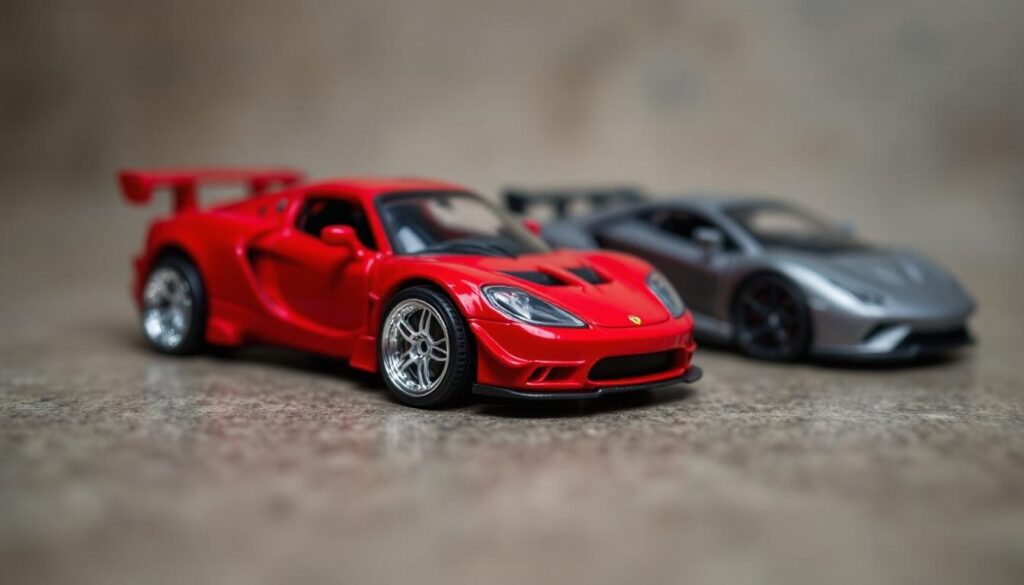
Out of this mad dash to Asia, some fresh-faced brands and funky market segments popped up. Imagine your collection spliced with a sprinkle of variety.
New players entered the scene, offering cars that weren’t just toys. These little metal speedsters transformed into tiny treasures. Companies found goldmines in crafting realistic replicas that made collectors, including myself, drool.
Improvements in Detail and Quality for Collector Markets
With production costs low and innovation speeding up like a kid on a sugar high, the attention to detail skyrocketed. Suddenly, models weren’t just about exteriors; interiors got a flashy makeover, too.
Quality improved, aimed squarely at collectors ready to swap bucks for beautifully detailed collectibles. These weren’t just toys—mini masterpieces worth showing off on any mantle or desk.
So, tell me, who wouldn’t want their pint-sized luxury car showroom?
The Collector Era (1990s – Present)
Ah, the 90s—a time of grunge music, dial-up internet, and the blossoming collector craze that diecast cars hitched a ride on. Let me tell you, these aren’t just toys gathering dust on a shelf. They’re mini-masterpieces that revved up our hearts and wallets!
Focus on Accuracy and Authenticity for Adult Collectors
You know when you step into a room of adults fussing over their tiny cars like kid-at-heart mechanics? That’s because companies like AutoArt and Minichamps decided to turn diecast cars into precision instruments rather than just knick-knacks.
Suddenly, we’re talking about opening doors, hoods that reveal engines, and interiors that scream, “I can’t believe it’s not a real car!” They tapped into our passion for authenticity and made tiny dreams come to life.
Limited Editions and Specialty Lines

As if detailed replicas weren’t enough, the geniuses in charge thought, “Why not reinvent our dwindling existential dread into excitement with limited editions?”
And voilà, you got specialty lines turning your average Joe into Indiana Jones on a quest. Think of it—getting your hands on a rare model gives you bragging rights you didn’t know you needed.
It’s less about the car and more about the story it tells at your local collector meet-up.
Impact of the Internet on Collecting and Trading
Cue the entrance of the World Wide Web—virtual flea markets spring up where you can auction, barter, and flaunt your latest find. Gone are the days of begging Uncle Charlie for his old collection.
Thanks to forums and niche websites, chances are you can swap a diecast Firetruck for some guy’s jet-plane replica halfway across the globe.
The internet turned casual collectors into digital treasure hunters, making sure no mini Ferrari ever truly goes extinct.
Technological Advancements in Production
Alright, buckle up, folks. We’re diving into the juicy stuff about how diecast cars went from cute desk ornaments to “OMG-I-need-this-now” collectibles.
Computer-aided Design and Manufacturing
Ever tried sculpting a Ferrari using a butter knife? Me neither, thank goodness. We’ve got CAD for that. Computer-aided design (CAD) is like the fairy godmother for diecast cars.
It turned the industry on its head. Designers waved their digital wands to create detailed models that you expect them to purr when you pick them up.
3D printing makes an appearance here, too—as in, “Let’s make sure that car actually looks like a car” kind of way. Precision goes from “eh” to “wow” with these digital tools, making diecast cars shine on your shelf.
Improvements in Painting and Tampo-Printing Techniques
Forget finger-painting; this is the real deal. The paint jobs on these babies used to be as basic as a 90s sitcom plot.
But now? It’s all about those layers, baby. We’re talking about vibrant paint, which makes real cars weep with envy. Tampo-printing—yes, that’s a real term—adds decals worthy of a standing ovation.
It’s like giving your car a tattoo, but, you know, legal. Each stripe and logo feels like a tiny piece of art. You might start believing these minis are headed for the showroom.
Use of New Materials and Composites
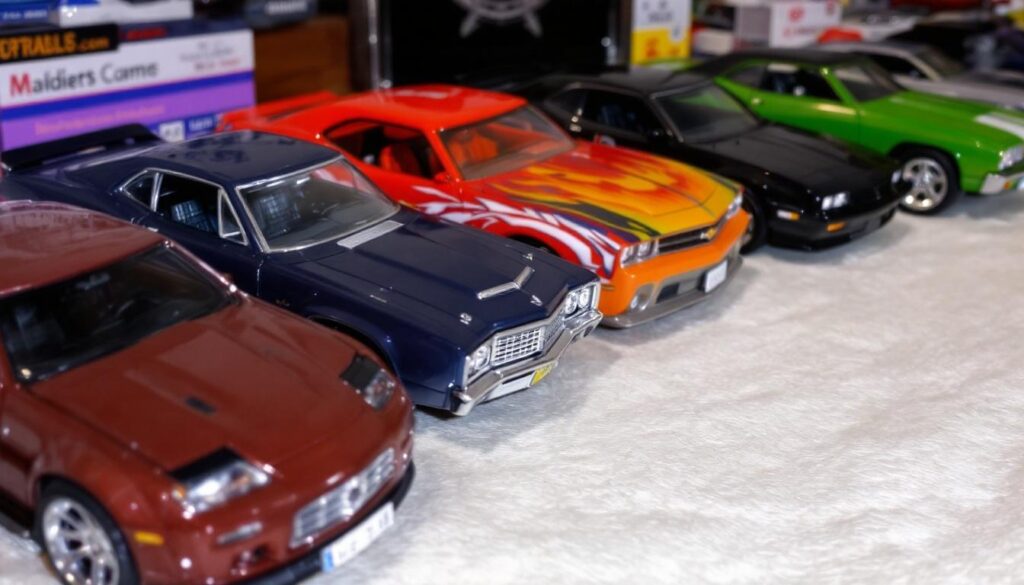
It turns out that materials matter—big time. Early diecasts were heavy with lead, but someone said, “Hey, maybe not poison!” and switched to zinc alloys instead.
These days, futuristic materials like composites are getting in on the action. These make for sturdy, realistic cars that won’t dissolve when you sneeze on them. Think light but strong, like your workout inspiration.
You might want to start your tiny demolition derby, but please don’t.
There you have it. Technological wizardry in diecast production makes these collectibles a must-buy for anyone wanting to add a bit of mini-magic to their lives. You’ve got to love it.
The Digital Age and Diecast Cars
So, you’re into diecast cars? Buckle up because the digital age has kicked this hobby into hyperdrive! Technology’s rolled in, bringing a whole new awesome level to collecting these mini marvels.
Online Communities and Marketplaces
Ever feel like shouting your diecast love from the rooftops? Well, now there’s a platform for that. Online communities are the new hotspots where collectors gather to share, trade, and chat all things diecast.
From Reddit threads to dedicated Facebook groups, it’s like a digital car show 24/7. And don’t even get me started on online marketplaces.
Sites like eBay and specialized auction platforms have turned car hunting into a global game. You can snag a rare model from halfway around the world without leaving your couch. Talk about driving the extra mile!
Digital Cataloging and Valuation Tools
Remember back in the day when cataloging your collection meant a messy spreadsheet or—gasp—a handwritten list?
Those days are gone, my friend! Digital tools now do all the heavy lifting. Apps and software track your collection, offering instant valuations based on market data. It’s like having a miniature stock market ticker for your diecast set.
With just a few clicks, you’ll know if your prized ride is a financial home run or coasting along.
Virtual Collecting and Digital Showcases
Why stop at physical cars when you can own a virtual garage? Enter the world of digital collecting.
Platforms allow you to add virtual models to your repertoire, keeping your collection climate-controlled in the mysterious cloud.
With digital showcases, you can flaunt your collection to buddies and strangers without dusting a single shelf. It’s all about collecting 2.0, with a splash of tech and a fun twist.
Frequently Asked Questions
What are diecast cars, and how are they made?
Diecast cars are miniature replicas of real vehicles crafted using a process that involves injecting molten metal into molds.
Originating in the early 1900s, this technique has evolved, transitioning from lead to safer materials like zinc alloy.
Today, technological advancements such as computer-aided design (CAD) and 3D printing enhance the precision and detail of diecast models, making them highly sought after among collectors.
Who were some pioneers in the diecast car industry?
Pioneers in the diecast car industry include companies like Dinky Toys and Tootsietoy, which began crafting miniature vehicles in the early 20th century.
German manufacturers like Märklin and Bing contributed significantly by producing detailed tinplate cars.
These companies laid the foundation for an industry that evolved from simple toys to precise replicas catering to children and adult collectors.
How did diecast cars evolve during the 1950s and 1960s?
The 1950s and 1960s marked the Golden Age of diecast cars, fueled by post-war economic prosperity.
Brands like Corgi Toys and Matchbox introduced innovative features and intricate designs, creating a “model car arms race.”
This era transitioned from basic replicas to highly detailed miniature engineering marvels, capturing the imagination of children and collectors alike.
What impact did Hot Wheels have on the diecast car industry?
In the late 1960s, Hot Wheels revolutionized the diecast car industry by shifting the focus from realistic replicas to imaginative, high-speed creations.
Their innovative designs and vibrant colors turned Hot Wheels into a cultural phenomenon and a staple in toy collections, expanding the appeal of diecast cars beyond traditional models.
How are environmental considerations influencing modern diecast production?
Modern diecast production is increasingly focused on sustainability.
Manufacturers use zinc alloy instead of lead, enhance energy efficiency, and reduce waste through recycling initiatives.
By incorporating recycled metals, plastics, and non-toxic paints, the industry is moving towards eco-friendly practices, allowing collectors to enjoy their hobby while being environmentally conscious.
What is the future of diecast car production?
The future of diecast car production is set to embrace technological innovations like 3D printing and CAD systems, which will allow for the creation of custom models and enhance design precision.
The collector market is evolving with trends like online trading and partwork series, which blend nostalgia with modern digital advancements, promising exciting developments for enthusiasts.

